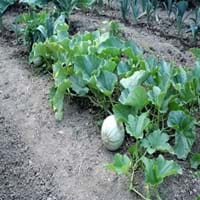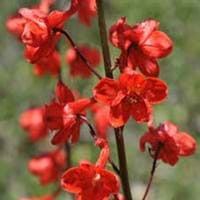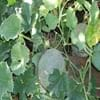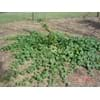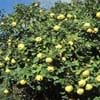Life Span
Annual
Perennial
Type
Fruit
Flowering Plants, Ornamental Plants, Shrubs
Origin
Hybrid origin, Africa
Africa
Types
C melo subsp melo
Not Available
Number of Varieties
Not Available
Habitat
gardens, Temperate Regions, Terrestrial
gardens, meadows
USDA Hardiness Zone
Not Available
Not Available
AHS Heat Zone
12-4
12 - 6
Sunset Zone
2a, 2b, 3a, 3b, 4, 5, 6, 7, 8, 9, 10, 11, 12, 13, 14, 15, 16, 17, 18, 19, 20, 21, 22, 23, 24
Not Available
Habit
Vining/Climbing
Upright/Erect
Minimum Width
Not Available
Flower Color
Yellow
Red, Rose
Flower Color Modifier
Bicolor
Bicolor
Fruit Color
White, Yellow, Light Yellow, Gold, Tan, Sandy Brown
Non Fruiting Plant
Leaf Color in Spring
Green, Light Green
Green
Leaf Color in Summer
Green, Light Green
Light Green
Leaf Color in Fall
Green, Light Green
Green, Yellow green
Leaf Color in Winter
Light Green
Green, Light Yellow, Tan
Leaf Shape
Oval
Palmate and toothed
Plant Season
Summer, Fall
Spring, Summer, Fall, Winter
Sunlight
Full Sun
Full Sun, Partial Sun
Growth Rate
Very Fast
Slow
Type of Soil
Loam
Clay, Loam, Sand
The pH of Soil
Neutral
Acidic, Neutral, Alkaline
Soil Drainage
Well drained
Well drained
Bloom Time
Indeterminate
Not Available
Tolerances
Drought
Heat And Humidity
Where to Plant?
Container, Ground
Ground, Pot
How to Plant?
Seedlings, Transplanting
Seedlings, Stem Cutting
Plant Maintenance
Medium
Medium
Watering Requirements
Do Not over Water, Keep the ground moist but not water-logged, Never Over-water, Requires a lot of watering, Requires regular watering, Requires watering in the growing season, Water Deeply
It cannot sustain wet-feet, Keep ground moist, Requires regular watering, Water more in summer
In Summer
Lots of watering
Lots of watering
In Spring
Moderate
Moderate
In Winter
Average Water
Average Water
Soil pH
Neutral
Acidic, Neutral, Alkaline
Soil Type
Loam
Clay, Loam, Sand
Soil Drainage Capacity
Well drained
Well drained
Sun Exposure
Full Sun
Full Sun, Partial Sun
Pruning
Remove Vines
Cut away fading foliage, Do not prune during shooting season, Remove damaged leaves, Remove deadheads
Fertilizers
All-Purpose Liquid Fertilizer
High-phosphorous fertilizers used, Organic Flower Fertilizer
Pests and Diseases
Red blotch
Bacterial leaf spot, fungus, Mealybugs
Plant Tolerance
Drought
Heat And Humidity
Flower Petal Number
Single
Single
Foliage Texture
Coarse
Fine
Foliage Sheen
Matte
Matte
Attracts
Not Available
Butterflies
Allergy
Abdominal pain, breathing problems, Diarrhea, Dizziness, Nausea, Vomiting
Severe allergen, Skin irritation, Skin rash, Throat itching, Vomiting
Aesthetic Uses
Not Used For Aesthetic Purpose
Beautification, Borders, Showy Purposes, Used for decorating walls, fences, gates, hedges, etc.
Beauty Benefits
Not Available
No Beauty Benefits
Environmental Uses
Air purification
Air purification
Medicinal Uses
anti-cancer, Antioxidants, Cardiovascular problems, Combats Stress, Eye Problems, Immunity, Insomnia
No Medicinal Use
Part of Plant Used
Fruits
Flowers
Other Uses
Economic Purpose, Employed in herbal medicine, Used As Food
Used in making blue ink
Used As Indoor Plant
No
No
Used As Outdoor Plant
Yes
Yes
Garden Design
Edible, Fruit / Fruit Tree, Herb / Vegetable, Vine
Edging, Feature Plant
Botanical Name
CUCUMIS melo
Delphinium cardinale
Common Name
Cantaloupe, Casaba Melon, Honey Dew, Melon, Muskmelon
Scarlet larkspur, Cardinal larkspur
In Hindi
खरबूजा
लाल रंग Delphinium
In German
Cantaloup Melone
Scarlet Delphinium
In French
Cantaloup
Scarlet Delphinium
In Spanish
Cantalupo
Scarlet Delphinium
In Greek
Πεπονάκι
Scarlet Δελφίνιο
In Portuguese
Cantalupo
Scarlet Delphinium
In Polish
Kantalupa
Scarlet Delphinium
In Latin
cantaloupe
Delphinium coccino
Phylum
Tracheophyta
Tracheophyta
Class
Magnoliopsida
Magnoliopsida
Order
Cucurbitales
Ranunculales
Family
Cucurbitaceae
Ranunculaceae
Clade
Angiosperms, Eudicots, Rosids
Angiosperms, Eudicots
Tribe
Melothrieae
Not Available
Subfamily
Cucurbitoideae
Not Available
Number of Species
Not Available
Importance of Cantaloupe and Scarlet Delphinium
Want to have the most appropriate plant for your garden? You might want to know the importance of Cantaloupe and Scarlet Delphinium. Basically, these two plants vary in many aspects. Compare Cantaloupe and Scarlet Delphinium as they differ in many characteristics such as their life, care, benefits, facts, etc. Every gardener must at least have the slightest clue about the plants he wants to plant in his garden. Compare their benefits, which differ in many ways like facts and uses. The medicinal use of Cantaloupe is anti-cancer, Antioxidants, Cardiovascular problems, Combats Stress, Eye Problems, Immunity and Insomnia whereas of Scarlet Delphinium is No Medicinal Use. Cantaloupe has beauty benefits as follows: Not Available while Scarlet Delphinium has beauty benefits as follows: Not Available.
Compare Facts of Cantaloupe vs Scarlet Delphinium
How to choose the best garden plant for your garden depending upon its facts? Here garden plant comparison will help you to solve this query. Compare the facts of Cantaloupe vs Scarlet Delphinium and know which one to choose. As garden plants have benefits and other uses, allergy is also a major drawback of plants for some people. Allergic reactions of Cantaloupe are Abdominal pain, breathing problems, Diarrhea, Dizziness, Nausea and Vomiting whereas of Scarlet Delphinium have Severe allergen, Skin irritation, Skin rash, Throat itching and Vomiting respectively. Having a fruit bearing plant in your garden can be a plus point of your garden. Cantaloupe has showy fruits and Scarlet Delphinium has no showy fruits. Also Cantaloupe is not flowering and Scarlet Delphinium is flowering. You can compare Cantaloupe and Scarlet Delphinium facts and facts of other plants too.
